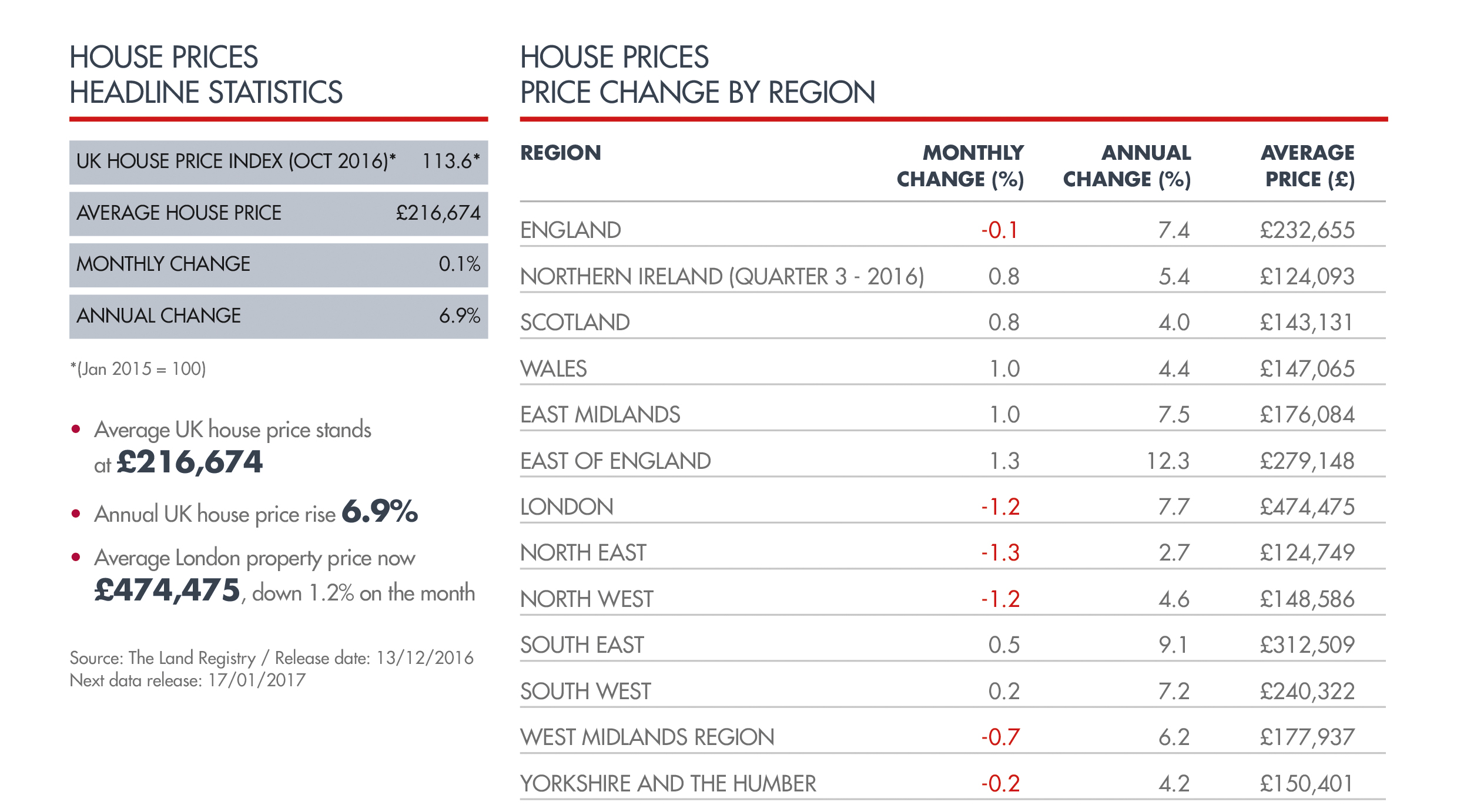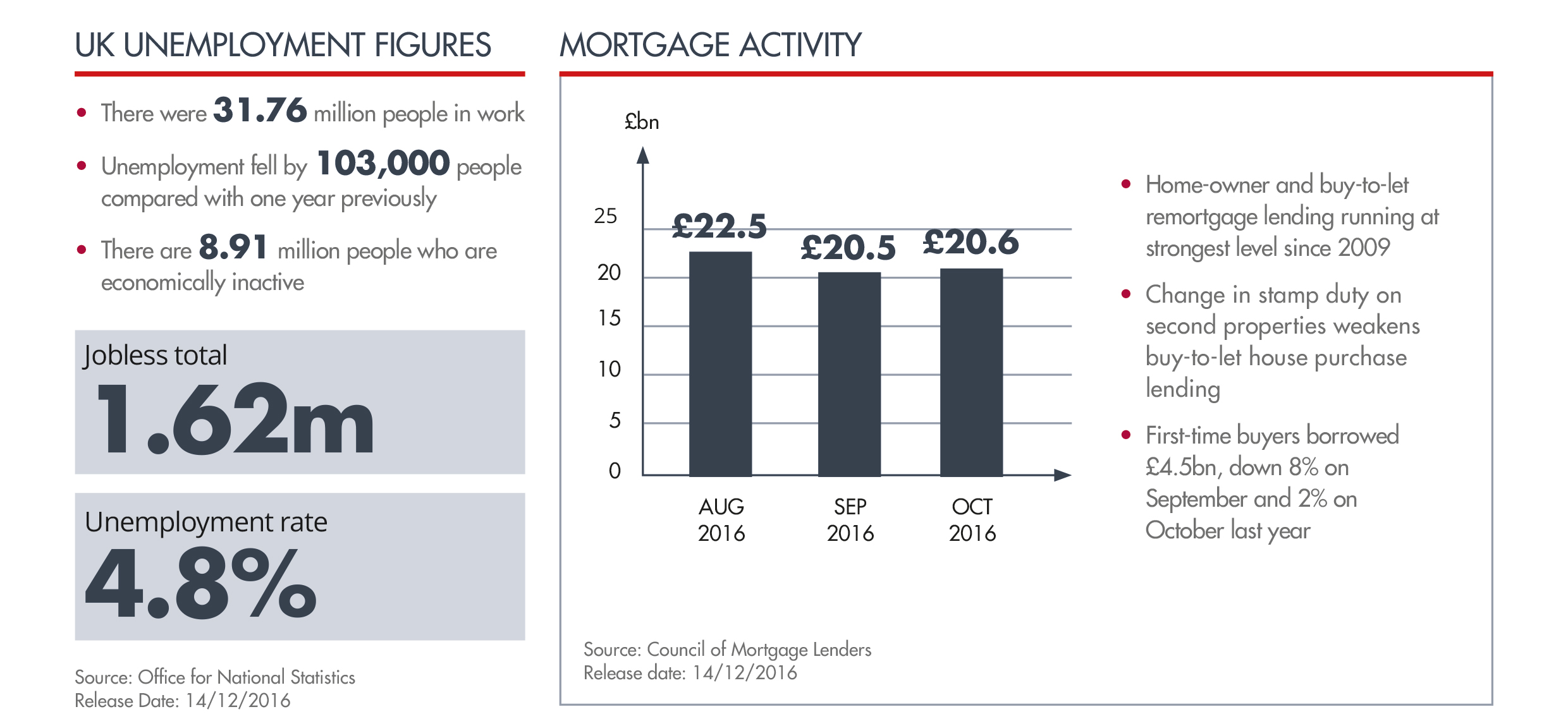PROPERTY MARKET REVIEW DECEMBER 2016
Our monthly property market review is intended to provide background to recent developments in property markets as well as to give an indication of how some key issues could impact in the future.
‘Financial Stability Report’ highlights risks to commercial property market
According to the recent Bank of England’s (BoE) Financial Stability report: “There is a risk of further adjustment in the commercial real estate market that could create financial stability risks, given the reliance of the market on inflows of foreign capital and, in some segments, stretched valuations.”
It went on to highlight that although it believed that the market as a whole was stabilising, certain segments, particularly the London market, appeared to be under greater pressure than others.
With open-ended funds somewhat vulnerable to a reduction in demand from foreign investors, the recent fall in the value of sterling has managed to continue to attract foreign investment in the sector.
London not necessarily the epicentre for investment
In many investors’ eyes, central London is considered the epicentre of commercial property activity, however this is not necessarily the case anymore. Given the expectation of high rents in the ‘core’ London market, investors are looking further afield to either the periphery of the capital, or other major UK cities for ongoing commercial property investment.
Brexit expectations may lessen the probability of rent increases in the core London market, but contrary predictions from the Office for National Statistics forecast population growth in the capital of 13.7% by 2024, therefore, demand for office space in central London may in fact increase in the longer term.
Low availability of regional office space and logistics warehouses
Savills recently released ‘Key themes in UK real estate’ report, indicates that occupiers in all sectors of the commercial property market are still assessing the impact of the referendum on the future paths for their businesses. With exit negotiations likely to be lengthy, businesses will continue to make property decisions and tenants are likely to demand greater flexibility when signing new leases. The report also points out that sterling weakness, combined with the income security that UK leases offer, will stimulate a further increase in non-domestic interest in commercial property in the UK. This trend will extend beyond the capital. The next five years are expected to see record levels of non-domestic investment regionally.
The report also highlights key commercial property picks for 2017, including dominant logistics warehouses and high quality regional offices, whose availability is low and demand has been unaffected by Brexit uncertainty. Key locations for warehouses are the Midlands and M25, though high rents may stimulate some drift to their edges. Demand for office space, particularly refurbished space in the £20-24/sq. ft. range, is likely to be supported by the growing trend of the relocation of firms outside of the capital, according to Savills.
It is important to take professional advice before making any decision relating to your personal finances. Information within this document is based on our current understanding and can be subject to change without notice and the accuracy and completeness of the information cannot be guaranteed. It does not provide individual tailored investment advice and is for guidance only. Some rules may vary in different parts of the UK.


